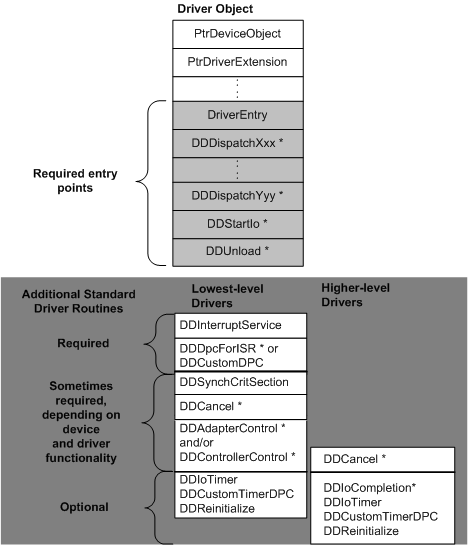Introduction to Driver Objects
The I/O manager creates a driver object for each driver that has been installed and loaded. Driver objects are defined using DRIVER_OBJECT structures.
When the I/O manager calls a driver's DriverEntry routine, it supplies the address of the driver's driver object. The driver object contains storage for entry points to many of a driver's standard routines. The driver is responsible for filling in these entry points.
The following figure illustrates a driver object, with the set of system-defined standard routines that lowest-level and higher-level drivers can or must have.
Each standard routine with an asterisk beside its name receives an I/O request packet (IRP) as input. Each of these standard routines also receives a pointer to the target device object for the I/O request.

The I/O manager defines the driver object type and uses driver objects to register and track information about the loaded images of drivers. Note that the dispatch entry points (DDDispatchXxx through DDDispatchYyy) in the driver object correspond to the major function codes (IRP_MJ_XXX) that are passed in the I/O stack locations of IRPs.
The I/O manager routes each IRP first to a driver-supplied dispatch routine. A lowest-level driver's dispatch routine usually calls an I/O support routine (IoStartPacket) to queue (or pass on) each IRP that has valid arguments to the driver's StartIo routine. The StartIo routine starts the requested I/O operation on a particular device. Higher-level drivers usually do not have StartIo routines, but they can.